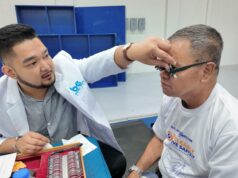“The luxury liner Superstar Gemini is docking at Subic this Saturday, but we realized there aren’t enough world-class buses to tour them to tourist destinations located within a 40-minute drive from Subic port,” said Department of Tourism (DOT) director for Central Luzon Carol Uy.
This, as Uy also said her office is promoting golf tourism in Central Luzon, as she cited reports that the Mimosa golf course in this freeport now hosts an average of 10,000 foreign golfers per week.
“I am now identifying all golf courses in the region so that tourists can be given more options,” she said.
In the Talk Widus forum of the Pampanga Press Club at the Widus Hotel and Casino here last Wednesday, Uy said several luxury liners are already slated to arrive at Subic port in the next weeks, including ships which carry as many as 7,000 tourists, mostly rich Chinese from mainland China.
“Luxury liners are a very lucrative market. We can’t afford to lose them,” she said.
Uy said that as of last Wednesday, tourism officials at Subic were still at a loss on where to get enough luxury buses to bring the 2,000 passengers of Superstar Gemini to various areas in Pampanga, Bataan and Zambales.
“I suppose that in the meantime, we will have to make do with touring huge groups within Subic only,” she said.
She noted that otherwise, several other sites in other provinces have already been identified as destinations for luxury liner passengers.
“Most Chinese passengers go for shopping and food, not so much adventure,” she noted.
This, even as Uy expressed optimism that Central Luzon would host some five million foreign tourists this year, more than the 4.5 million tourists which visited the region in 2017.
“We have so much going on in the region in terms of tourist arrivals not only by air but also by sea via the Subic ports. Last year, many domestic flights from Clark have been mounted by airlines and there are more new destinations to be launched,” she said.
Uy noted that South Koreans continue to comprise the biggest number of foreign tourists in Central Luzon, followed by Americans and Chinese.




